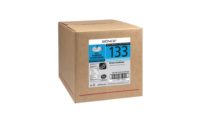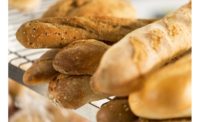Company: Royal DSM
Website: dsm.com
Ingredient Snapshot: Royal DSM, a global science-based company in Nutrition, Health and Sustainable Living, has introduced PreventASe XR, an enzymatic solution that prevents the formation of acrylamide in high-pH applications such as corn chips, biscuits, and crackers. DSM’s PreventASe is a trusted acrylamide-reduction solution proven to reduce acrylamide in processed foods by up to 95 percent. While PreventAS is suitable for a broad range of applications, the new PreventASe XR is optimized for higher-pH applications.
Global awareness about acrylamide is on the rise. Acrylamide is a suspected carcinogenic substance formed in foods containing reducing sugars which are processed at a high temperature. Food manufacturers are acting fast to reduce acrylamide in their products, but face a challenge to deliver acrylamide-reduced versions of their products with the same taste and texture their consumers know and love. DSM’s PreventASe and PreventASe XR are asparaginases that convert free asparagine present in many foods, thereby preventing the formation of acrylamide without impacting taste, texture or shelf-life.
“The global conversation about acrylamide is heating up, and DSM is working with our customers to address this challenge for the food industry,” says Fokke van den Berg, business director for baking at DSM. “An advantage of using asparaginase to tackle acrylamide is it requires negligible changes to a product recipe or production process. With PreventASe and now PreventASe XR, DSM is enabling acrylamide reduction in the widest range of snacks and baked goods.”
Manufacturers face challenges in reducing acrylamide levels in applications that contain ingredients like chemical leavening agents or masa (corn which has undergone a lime treatment) such as savory crackers, biscuits, tortilla chips, and corn chips, and are therefore more alkaline (up to pH 9). A higher-pH can limit the effectiveness of asparaginases currently available on the market. PreventASe XR is ideal for more alkaline applications, delivering significant reductions in acrylamide levels of up to 95 percent, depending on the application.




